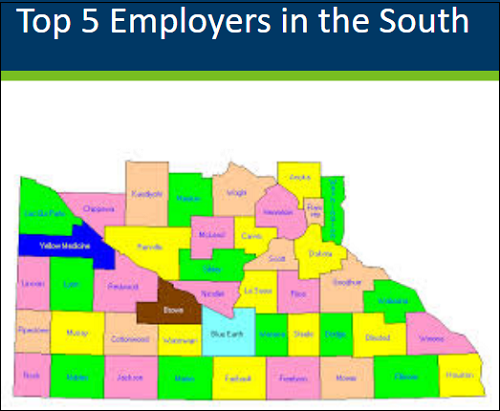- MN ABE Connect
- Archive
- Labor Market Trends and Employer Engagement Strategy
 November 27, 2023
November 27, 2023
Labor Market Trends and Employer Engagement Strategy
Carly Voshell, Transitions Coordinator Anthony Schaffhauser, Labor Market Analyst – NW MN James Whirlwind Soldier, Workforce Strategy Consultant – NW MNThe North and South ABE Regional events in fall 2023 included a session presented by experts from DEED (MN Department of Employment & Economic Development). This session focused on employment trends and strategies Adult Education programs can harness to form strategic partnerships with employers. Below are some of the key points discussed.
The labor market reached unprecedented “tightness” – low unemployment and high numbers of job openings — during pandemic recovery. Throughout Minnesota there are 2.5 job openings per jobseeker, and slowing labor force growth due to demographics is expected to keep labor markets tight into the near future.
That means there are plentiful career transition opportunities for ABE learners now and in the future! So, any successful employer engagement strategies ABE programs develop now will continue to pay off for years.
Using data to understand the local labor market trends is the first step. Three DEED tools were highlighted at the regional presentations.
1) Cost of Living Tool
To focus on the jobs that pay a family sustaining wage, use this tool to find the basic cost of living for a specific county or region. Note this is basic costs: no savings, vacation or fun.
2) Occupations in Demand
This tool Combines Job Vacancy Survey Data (More vacancies, higher rank; More temporary or seasonal vacancies, lower rank), Occupational Employment Statistics (Larger occupation, higher rank) and Unemployment Insurance claims (More continuing claims, lower rank).
3) Business Finder
Now that you are looking at occupations in demand that pay a living wage, you can search for nearby businesses that employ people in those industries.
Next steps for adult educators
Once key employers are identified, ABE programs can start to form a strategic plan. An additional resource highlighted in the regional presentations was element two of the Career Pathways Toolkit. The Employer Engagement Self Assessment located in the toolkit is meant to understand the current reality and help set goals for engagement strategies.
 The North and South Regional Event presentations included information on top employers and the job descriptions of entry level positions specific to those geographic areas. To see that information, please review the presentation slides. What skills do most entry level positions require? Common requirements are a High School Diploma or equivalent, English speaking, reading, and communication, basic computer and math skills, and professional acumen. Those are all skills adult learners develop by participating in ABE programming.
The North and South Regional Event presentations included information on top employers and the job descriptions of entry level positions specific to those geographic areas. To see that information, please review the presentation slides. What skills do most entry level positions require? Common requirements are a High School Diploma or equivalent, English speaking, reading, and communication, basic computer and math skills, and professional acumen. Those are all skills adult learners develop by participating in ABE programming.
When approaching potential employer partners, keep the following in mind:
- Don’t exclude smaller organizations. Often bigger businesses have systems in place to give people a hand up, but smaller businesses might respond well to a partnership to help retain employees.
- Look for a “culture of learning”, or a culture that supports and promotes personal development in a potential partnership. You won’t “know” a culture simply by looking at job descriptions, metrics, and statistics around a business or role.
- Key methods to communicate with employers are LinkedIn, networking events, local Chamber of Commerce events, or reach out to your Regional Workforce Strategy Consultant to help establish employer contacts.
Exploring labor market trends and engaging employers is a complex process. But this is an important step for connecting adult education students to a meaningful career. For additional help with DEED data tools or regional employment information, please contact your Regional Analyst or Regional Workforce Strategy Consultant.
More information
Questions or comments about employer engagement? Please contact Carly Voshell, ATLAS Transitions Coordinator, at [email protected] .

Newsletter Signup
Get MN ABE Connect—the official source for ABE events, activities, and resources!
Sign UpArticle Categories
- ABE Foundations/Staff Onboarding
- ACES/Transitions
- Adult Career Pathways
- Assessment
- CCR Standards
- Citizenship
- COVID-19
- Cultural Competency
- Digital Literacy/Northstar
- Disabilities
- Distance Learning/Education
- ELA
- Equity/Inclusion
- ESL
- HSE/Adult Diploma
- Listening
- Math/Numeracy
- Mental Health
- Minnesota ABE
- One-Room Schoolhouse/Multilevel
- Professional Development
- Program Management
- Reading
- Remote Instruction
- Science
- Social Studies
- Speaking/Conversation
- Support Services
- Teaching Strategies
- Technology
- Uncategorized
- Volunteers/Tutors
- Writing